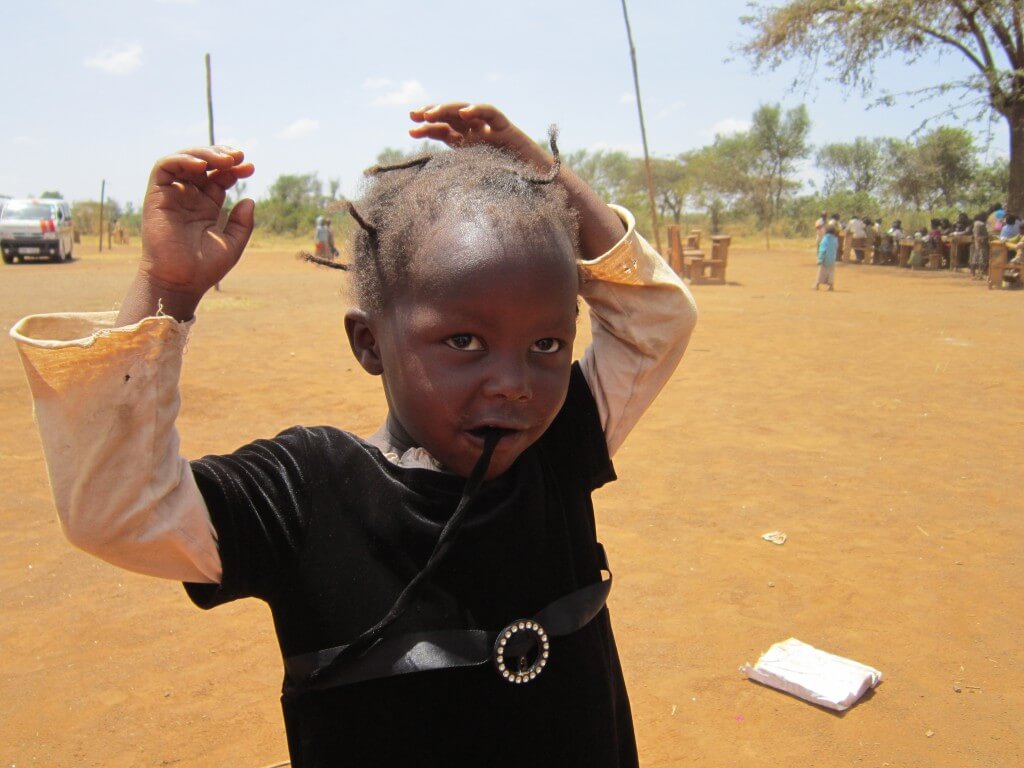Collecting water from the river in Kampi
A dusty schoolyard shows in this child’s hair
Clean water at last!!
The tank & rain harvesting system
Water = Life ~ a garden begins.
Abundant smiles from kids in Kampi
The rain harvesting system
Water has been an issue in Kampi Ya Moto long before I knew this place existed. For years children in this area, many of them orphaned, have had the daily task of walking the hot and dusty two-mile trek to a river to collect water that was then used for drinking and cooking. I’ve been told that the water was usually boiled before it was consumed, but the mere fact that the mortality rate in this area was 50% or higher leads me to believe that boiling alone didn’t remove the incidence of water borne illnesses.
Kampi Ya Moto is an arid region of Kenya that literally translates to “Camp of Fire”. I used to walk to the river in this area with the children every time I visited their school. In a word, it’s repulsive. The water is brown, and the shore is filled with mud-pocked holes made by the hooves of the cows and other animals that share this water hole with members of the village.
For the past several years we have tried to have a borehole dug, but were met with obstacles at every turn. It’s been an uphill climb since we’ve started this process, from the purchasing of the land to the conducting of two geological studies (yes, that’s plural – the first one was lost along the way!), and ending with the unfortunate circumstance of hiring a company who claimed to be Living Waters International but made off with our hard won funds instead. In June 2013, Christian Broadcasting Network (CBN) – our partners in this project, hired a company that drilled down 215 meters before experiencing “high borehole collapse”. At that point it was determined that the well was dry. After some research and deliberation a rain harvesting system was set up as an alternative, a spigot was installed outside the school and today the children are able to get clean drinking water whenever they are thirsty. This is a HUGE change for these kids, and the presence of the tank has revolutionized their school. During our visit last May I immediately noticed two big differences, first in the appearance of the children – they met us with smiles and waves, despite the relentless heat. The second thing I noticed was that there was a small garden started outside the school. This was a novelty, as prior to this time nothing planted there would have survived the trip up through the soil much less the searing temperatures at the surface.
By last May the 10,000-liter water tank had been in place for over a year, so the teachers and students had been through both the rainy and the dry seasons that dominate that region of Kenya. At that point in the year they hadn’t run out of water, but the previous year they had watched the tank overflow during the rainy season, only to be used up during the months of hot, dry days that followed. The frustration of having more than enough water for a few months and then not enough throughout the remainder of the year, meaning that children would once again have to make the trek to the river for muddy water helped us make the decision to install a second 10,000-liter tank this year. It’s a fairly straightforward process to purchase and install the tank, but one that requires funding, oversight and faith in the people in charge. This is just one of the major projects EC is embarking on in 2016. Stay tuned for more updates!








